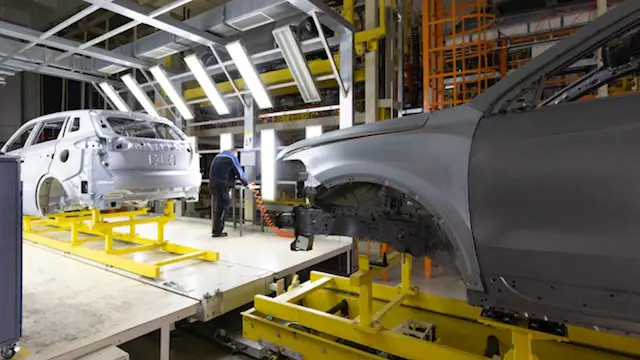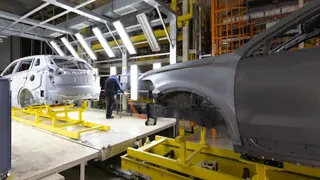
Automotive Embedded Systems & Applications
Self-paced videos, Lifetime access, Study material, Certification prep, Technical support, Course Completion Certificate
Uplatz
Summary
- Reed courses certificate of completion - Free
- Uplatz Certificate of Completion - Free
Add to basket or enquire
Overview
Uplatz offers this comprehensive course on Automotive Embedded Systems & Applications. It is a self-paced course with online video lectures. You will be awarded Course Completion Certificate at the end of the course.
Advances in consumer electronics have raised expectations for our in-vehicle experience. Entertainment, connectivity, and safety are becoming important factors that influence consumer decisions. New entrants in the automotive segment are setting up a new paradigm for consumer experience. As the pace of innovation continues to accelerate in the automotive industry, the need for high-performance compute and graphics technologies is increasing.
With the advent of technology, particularly in the domain of Internet of Things (IoT) and Artificial Intelligence, vehicles and automotive systems have become "smarter".
Cruise control, collision detectors, navigation systems, and several other such devices are implemented in private and commercial vehicles today. Such features are meant to aid the driver in getting better control of the vehicle, to increase security, or to use the data for analysis. These tools, technologies, and processes are collectively called automotive embedded systems.
For example, the cruise control automatically drives the car at a constant specified speed without the driver's intervention. The traffic sign recognition feature can detect the speed limit of the zone you are in and adjusts the vehicle speed accordingly. High-end vehicles today use over 100 such tools implemented using Electronic Control Units (ECUs) that transmit 3000-5000 communication signals.
What Are the Different ECUs Available?
Most of the ECUs found in vehicles today can be broadly classified into six categories.
- Powertrain: Engine and transmission controls are classified under powertrain. If the vehicle is a hybrid one, the controls related to those functionalities also come under this category.
- Chassis: Steering control, braking and anti-braking systems (ABS), electronic stability control, suspension, and two-wheel or four-wheel drive controls (2WD or 4WD) are classified under chassis.
- Body: The controls related to the periphery or skeleton of the vehicle come under this category, like doors, windows, lighting, and key fob.
- Multimedia, Telematics, and HMI (Human Machine Interface): This category includes the components of the infotainment or the media system in the car, the dashboard or the instrument cluster, and the entire telematics unit that ensures vehicle connectivity.
- Active and Passive Safety: The different components in a vehicle that provides safety are the airbags, seatbelts, cruise control system, collision warning system, and other such assistive tools. Most of these features are new and are being developed rapidly in recent times.
- ADAS (Advanced Driver Assistance Systems): Another recent addition in automobiles, ADAS systems cover a variety of tools like parking assistance, 360-degree view, traffic sign indicators, and other systems that make use of multiple cameras and sensors to relay information. Based on the cost of the vehicle, these devices can have simple as well as advanced functionalities.
Curriculum
Course media
Description
Automotive Embedded Systems & Applications - Course Curriculum
Automotive Safety Standards
Automotive Embedded Applications
Introduction to Automotive Systems
Vehicle Informatics Introduction
Serial Interfaces
CAN and LIN Bus
TTP FLEXRAY
Vehicle Control
Car Communication based on Bluetooth Link
Wireless Networking Technologies
Bluetooth Security
ZigBee 802.15.4
Bluetooth Low Energy
Context Aware and Wearable Computing
Components of Automotive Systems
Input Output Interfacing
Network Interface Cards
Internet Standardization
Jini Architecture
IEEE 1394
MOST Cooperation
Survey of MOST System Architecture
Survey of MOST Specifications
MOST Application Framework
MOST Protocols
MOST Physical Layer
MOST Network and Fault Management
MOST Network Diagnostics
MOST Network Services
MOST Network Interface Controller
MOST Tools
MOST Compliance Tests
Testing MOST based Infotainment Systems
Introduction to MOST150 in Series
MOST150 Migration
Manufacturing and Processing of MOST Components
State-of-the-Art Automotive Embedded Systems
ELECTRIFICATION
As mentioned earlier, many vehicle manufacturers are shifting to hybrid or electric vehicles to reduce pollution and use alternative vehicular fuels. Such vehicles will have a modified engine that brings in further challenges like battery storage and energy optimization.
HMI
Apart from the integrated digital cockpit, the other features that are being developed in the HMI category are gesture or voice-based controls (tuned to handle local languages and accents as well) and virtual assistants.
SAFETY AND SECURITY
With an incline in the use of digital and electronic tools, there is also a higher rate of cybercrime. In the case of automobiles, safety systems must be kept in place so that hackers cannot take remote control of your vehicle through the ECUs. Driver monitoring systems and vehicle health monitoring systems are other recent developments, especially for commercial vehicles.
Some devices scan the driver's eyes for signs of abnormal behavior like drunken driving or fatigue and other tools that track engine parameters and usage to predict when the vehicle must be serviced next. Similarly, devices that track how a driver uses a car can help them get cheaper insurance policies based on the actual distance driven.
CONNECTED VEHICLE
Telematics and IoT devices help companies like Uber and logistics businesses track their fleet across locations. Vehicle tracking, along with GPS technology, can help fleet managers route their vehicles optimally to avoid traffic or deliver the goods in the shortest time.
Truck platooning is another feature that has picked up relevance recently. Here, if several trucks or vehicles are travelling on the same route, only the first truck communicates with the outside world while all the trucks that follow only talk to the first truck, creating a chain of trucks, interspersed in one long line.
LATEST TECHNOLOGIES
Some of the futuristic trends that will be embedded in automobiles in the future are:
Computer Vision: Image and pattern recognition for sensors and cameras.
Sensor Fusion: How multiple sensors can interact with each other to achieve a common goal.
Artificial Intelligence and Machine Learning: Any form of data analysis, language processing, and decision-making involves AI.
Autonomous Driving (not commercially available yet): Complete or partial control of driving without human intervention.
Augmented Reality (AR): AR headsets and models are available in other domains like gaming and entertainment. In vehicles, AR can be used to display information for the driver on the windshield.
Vehicle Ethernet: A robust enough Ethernet network that accommodates all these high-bandwidth features.
Who is this course for?
Everyone
Requirements
Passion and zeal to learn and succeed!
Career path
- Automotive Engineer
- Automotive Embedded Engineer
- Embedded & Electronics Engineer
- Automotive Embedded Software Engineer
- Software Applications Engineer Automotive
- Test & Validation Engineer - Vehicle Electronics
- EMC and Automotive Embedded Systems Engineer
- Lead Embedded Software Engineer
- System Design Engineer
- Application Engineer - Automotive Software
- Vehicle Informatics Engineer
Questions and answers
Currently there are no Q&As for this course. Be the first to ask a question.
Certificates
Reed courses certificate of completion
Digital certificate - Included
Will be downloadable when all lectures have been completed
Uplatz Certificate of Completion
Digital certificate - Included
Course Completion Certificate by Uplatz
Reviews
Legal information
This course is advertised on reed.co.uk by the Course Provider, whose terms and conditions apply. Purchases are made directly from the Course Provider, and as such, content and materials are supplied by the Course Provider directly. Reed is acting as agent and not reseller in relation to this course. Reed's only responsibility is to facilitate your payment for the course. It is your responsibility to review and agree to the Course Provider's terms and conditions and satisfy yourself as to the suitability of the course you intend to purchase. Reed will not have any responsibility for the content of the course and/or associated materials.


